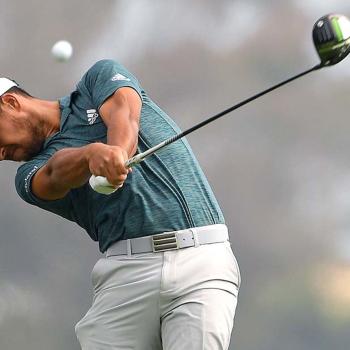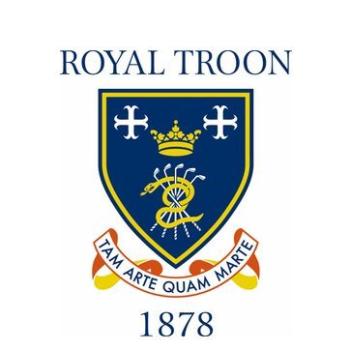Billy Casper was one of the greatest golfers of all time. He was unquestionably the best putter on the Tour throughout his career. He won 51 PGA Tour tournaments, and three of them were majors. He is seventh on the all-time PGA Tour list for most wins.
The most prominent feature of Billy Casper’s golf game was his unorthodox, yet syrupy-smooth, putting stroke. He liked to hit the putt just hard enough for it to reach the hole and fall in gently. Billy was like another great putting wizard in that way—Bobby Locke from South Africa. You have to have a great touch to do that; otherwise, you’ll have a lot of putts finish short of the hole.
Nothing irritates golfers, especially pro golfers, more than leaving putts short. Lee Trevino used to say, “99% of all putts left short don’t go in.” Scratch your head and try to figure that out. What the heck did the SuperMex mean? I guess it was that once in a very great while, you can leave a putt short, with the ball hanging over the front lip of the cup; but wait a few seconds and it falls in. But don’t wait longer than ten seconds or the rules of golf say it’s a two shot penalty.
Let me describe the unique, Casper, putting technique. At address, Billy’s hands rested against his inner-left thigh. From this position, it was impossible for his hands to follow through after hitting the ball. That’s just the way Billy wanted it. I know, because one time I asked him about it. Billy said that on his backswing he would swing his mallet-headed putter back with only a wrist cock and thus no shoulder-turn. In doing so, the club head would elevate abruptly in his backstroke. He would manipulate his wrist cock so that the clubface would remain relatively square to his target line, thus closing that clubface in relation to his swing arc. On his downswing, Billy would contact the ball and then the turf, so that the clubhead would stop abruptly. He was so good at it that it seemed he often contacted the ball and turf simultaneously. That result was an extremely abbreviated follow-through. His putter head would stop sometimes only an inch past where the ball originally was lying. This style is often compared to lightly striking a tack with a hammer. That’s why it has been called “the tap stroke.”
I have never seen anyone with a putting stroke quite like Billy Casper’s. Arnold Palmer and Gary Player also had a tap stroke, but they were not as wristy on the backswing as Casper was. And I don’t think I’ve ever seen anyone try to copy Billy Casper’s putting technique and be successful in pro golf with it. However, one time my dad tried it and it helped him get rid of his putting yips.
When I was a kid, my dad was intrigued with Billy Casper. One time, when I was about ten years old, our family left our damp, chilly weather at home in Seattle, Washington, and we went on a winter vacation to sunny Southern California. On the way, we drove to the beautiful Monterey Peninsula. My dad and I then attended the PGA Tour’s Bing Crosby Invitational Pro-Am golf tournament. My dad wanted to watch Billy Casper more than any of the other pros. My dad was so intrigued with Billy’s short game and how he managed himself around the golf course. Sure enough, Casper won the tournament.
Portly Billy had a mystique about him. He would strut down the fairway just beaming with confidence. Unlike the other pros, he would warm up before a round of golf, even in PGA Tour tournaments, by hitting only a handful of golf balls on the practice range. He was like a Rolls Royce. You know, you don’t have to warm it up in cold weather. Some days, Billy might avoid the practice range altogether, strike a few putts on the practice green, and away he’d go, off to the first tee.
In my second year on the PGA Tour, I was paired with Billy Casper for the first time. It was at the Almaden Open in California. Billy shot about the easiest 66 on a par 72 course that I’ve ever seen. When we finished the round, and we were having lunch together, I asked him about his reputation for practicing the least of any of the big name pros. He replied, “I don’t need to practice.” That got my attention. I had never heard any pro golfer say that. So, I inquired, “What if you have a bad day on the course? Don’t you go to the practice range after the round and try to work things out?” He answered, “I don’t need to. If I hit a bad shot during the round, I immediately know what caused it. I just make the necessary adjustment on the next swing.” At that moment, I was drinking from my glass of ice tea, and I half-choked on it.
Well, back to my dad and his ala Billy Casper tap stroke, when I was a teenager my dad and I used to play in a few amateur golf tournaments together in the summer. One year, we were playing in our prestigious Pacific Northwest Golf Association Championship at the Oak Bay Golf Club in the majestic, emerald-colored city of Victoria on Vancouver Island in British Columbia, Canada. My dad played well in the 36-hole qualifier and made the championship flight along with me. He was really nervous in his first match. They finished the eighteen-hole competition even and immediately went to the first tee for the sudden death playoff. I was there coaxing my dad on. They tied the first three holes. The fourth hole is a fairly difficult, uphill par-four in which you tee-off alongside a large inlet from the Pacific Ocean, called the Straits of Juan de Fuca. What a beautiful site it is. My dad got off two fine shots right in the middle of the green with a slightly uphill forty-foot putt that broke a little left to the hole. He had his opponent beat, who was chopping it all over the layout. Somehow, the guy hit a miracle fourth shot, flopping some wedge shot outta nowhere in the spinach, and stiffed it for a gimme bogie. The only thing that was bad about that golf course was that they had seaside bent grass on the greens. That made them the grainiest greens I have ever seen. And, of course, since my dad’s putt was uphill, he must have been thinking about trying to make sure he hit it hard enough to reach the cup. But he put that Casper tap stroke on that forty-footer and stubbed the ground right behind the ball. That grain was so strong against him that he never made contact with the ball. I don’t think I ever saw my dad turn that beet-red in the face in all my life. As for the match, that was the end of him. He four-putted, lost by a stroke, and shook hands like a golfing gentleman. Being in the gallery, as I was, I didn’t know whether to show compassion for my dad or bust out laughing. That night at dinner with our friends, we had some good laughs about it. And you could have bet on one thing: that was the last time my dad ever used the Billy Casper tap stroke.
The Casper putting stroke was surely one that no golf instructor would teach students. Yet, Billy Casper was probably the best lag putter I’ve ever seen. To watch him do anything with his hands, you’d think he could have been a heart surgeon, or a magician, or maybe another Michelangelo. He certainly was a magician with that mallet putter. A doctor friend of his once told me that Billy could stand at one end of a pool table and consistently throw billiard balls in the corner pockets at the other end of the table.













